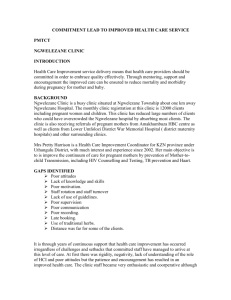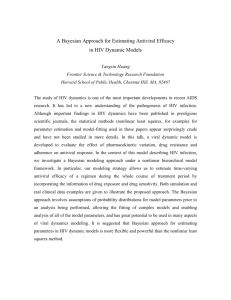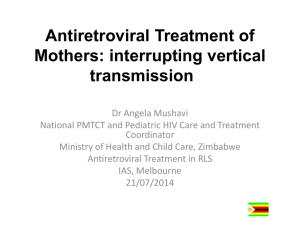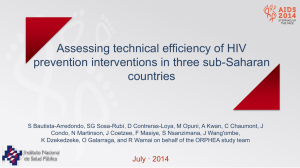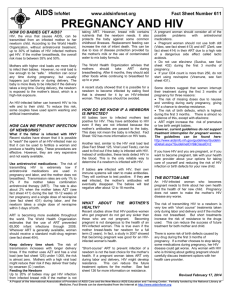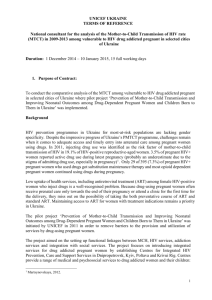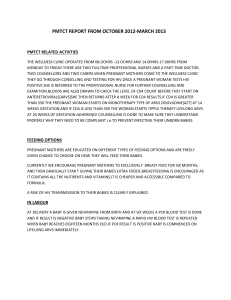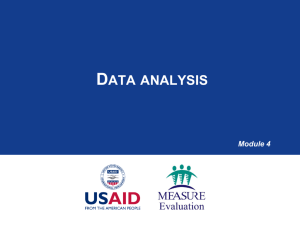PMTCT_Email_Guide_%233_English - C-Hub
advertisement
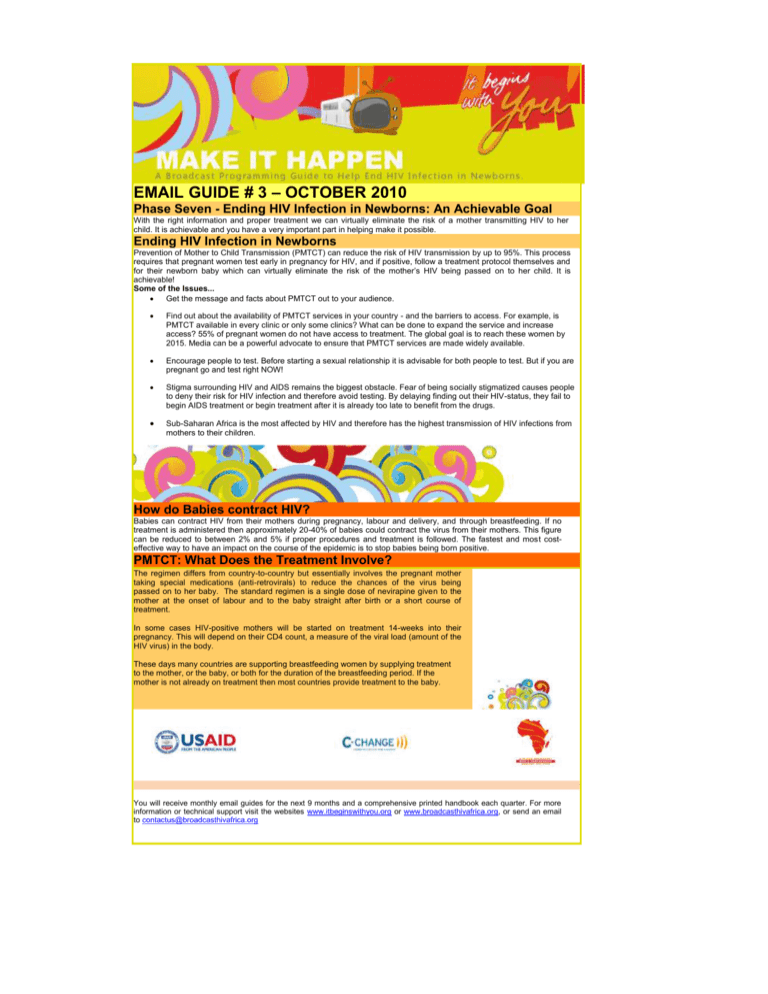
EMAIL GUIDE # 3 – OCTOBER 2010 Phase Seven - Ending HIV Infection in Newborns: An Achievable Goal With the right information and proper treatment we can virtually eliminate the risk of a mother transmitting HIV to her child. It is achievable and you have a very important part in helping make it possible. Ending HIV Infection in Newborns Prevention of Mother to Child Transmission (PMTCT) can reduce the risk of HIV transmission by up to 95%. This process requires that pregnant women test early in pregnancy for HIV, and if positive, follow a treatment protocol themselves and for their newborn baby which can virtually eliminate the risk of the mother’s HIV being passed on to her child. It is achievable! Some of the Issues... Get the message and facts about PMTCT out to your audience. Find out about the availability of PMTCT services in your country - and the barriers to access. For example, is PMTCT available in every clinic or only some clinics? What can be done to expand the service and increase access? 55% of pregnant women do not have access to treatment. The global goal is to reach these women by 2015. Media can be a powerful advocate to ensure that PMTCT services are made widely available. Encourage people to test. Before starting a sexual relationship it is advisable for both people to test. But if you are pregnant go and test right NOW! Stigma surrounding HIV and AIDS remains the biggest obstacle. Fear of being socially stigmatized causes people to deny their risk for HIV infection and therefore avoid testing. By delaying finding out their HIV-status, they fail to begin AIDS treatment or begin treatment after it is already too late to benefit from the drugs. Sub-Saharan Africa is the most affected by HIV and therefore has the highest transmission of HIV infections from mothers to their children. How do Babies contract HIV? Babies can contract HIV from their mothers during pregnancy, labour and delivery, and through breastfeeding. If no treatment is administered then approximately 20-40% of babies could contract the virus from their mothers. This figure can be reduced to between 2% and 5% if proper procedures and treatment is followed. The fastest and most costeffective way to have an impact on the course of the epidemic is to stop babies being born positive. PMTCT: What Does the Treatment Involve? The regimen differs from country-to-country but essentially involves the pregnant mother taking special medications (anti-retrovirals) to reduce the chances of the virus being passed on to her baby. The standard regimen is a single dose of nevirapine given to the mother at the onset of labour and to the baby straight after birth or a short course of treatment. In some cases HIV-positive mothers will be started on treatment 14-weeks into their pregnancy. This will depend on their CD4 count, a measure of the viral load (amount of the HIV virus) in the body. These days many countries are supporting breastfeeding women by supplying treatment to the mother, or the baby, or both for the duration of the breastfeeding period. If the mother is not already on treatment then most countries provide treatment to the baby. You will receive monthly email guides for the next 9 months and a comprehensive printed handbook each quarter. For more information or technical support visit the websites www.itbeginswithyou.org or www.broadcasthivafrica.org, or send an email to contactus@broadcasthivafrica.org

